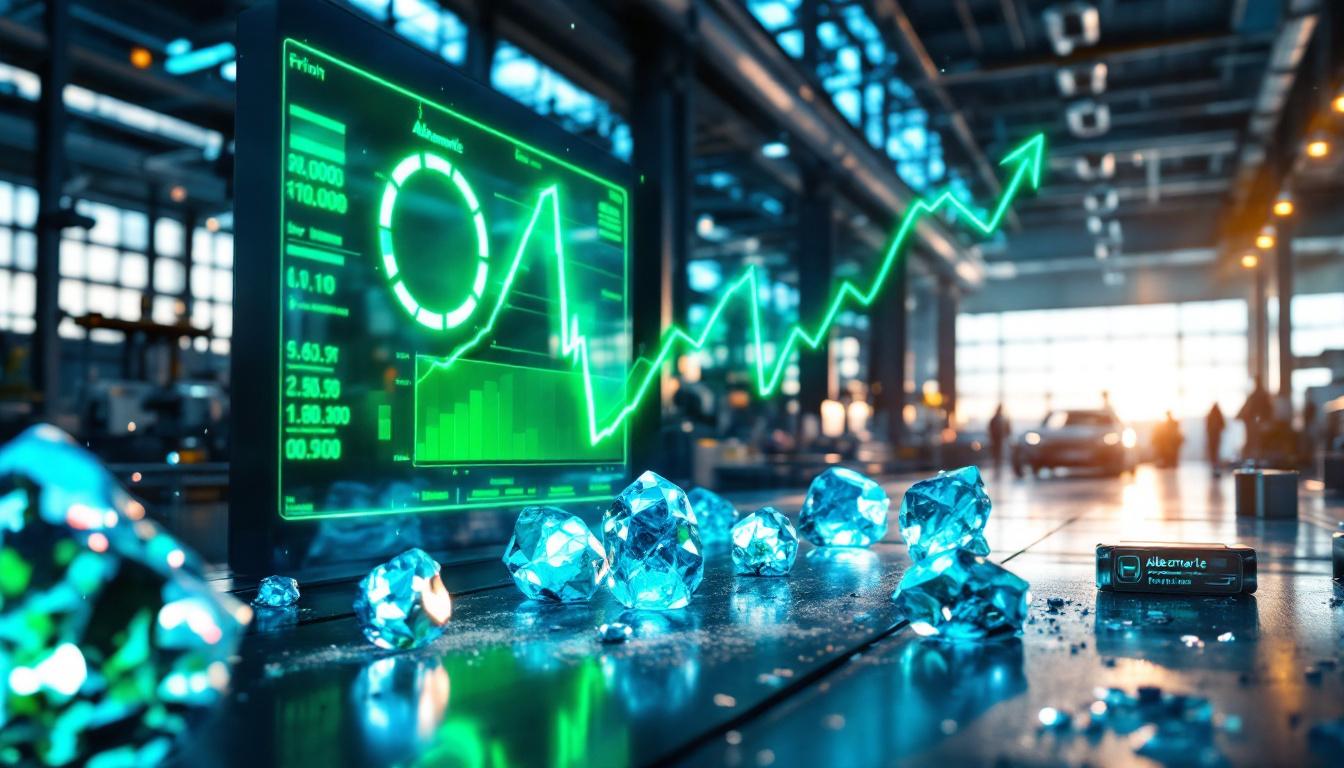What Makes Silver and Gold Enduring Stores of Value?
Precious metals have maintained their status as trusted stores of value for millennia, transcending countless economic systems and currency collapses. This remarkable endurance isn't merely coincidental—it's rooted in fundamental properties that modern financial instruments simply cannot replicate.
The Trust Factor in Precious Metals
The relationship between precious metals and human trust systems runs remarkably deep. Unlike government-issued currencies that can be created at will, silver and gold possess intrinsic value through their scarcity, durability, and universal recognition. This creates a unique trust proposition: metals don't require faith in a government, institution, or third party to maintain their worth.
"Freedom and honest money go hand in hand… The first casualty of a rigged monetary system is lost trust." — David Morgan
This inherent trustworthiness explains why, despite technological advances and financial innovation, precious metals continue to serve as monetary anchors during periods of uncertainty. Their value isn't derived from a promise but from thousands of years of human experience recognizing their utility as gold as safe haven vehicles.
The Freedom Connection
The historical relationship between sound money and human liberty reveals a profound pattern: societies with stable monetary systems tend to foster greater individual freedoms. When monetary systems become manipulated or debased, public trust erodes rapidly, affecting not just markets but social cohesion itself.
In genuinely free societies, individuals make economic choices based on the confidence that their labor's value, savings, and investments will maintain stability over time. Precious metals provide a counterbalance to centralized monetary control, offering financial autonomy that paper currencies simply cannot match.
As central bank policies increasingly manipulate currency values, many investors turn to silver and gold investing as protection against arbitrary devaluation—a form of monetary self-determination that bridges ancient wisdom with modern portfolio management.
Historical Precedent of Currency Debasement
The pattern of currency debasement stretches back to antiquity, providing valuable context for today's silver and gold investors. The Roman Empire provides perhaps the most instructive historical example—rulers gradually reduced the silver content in their coinage, mixing in base metals while claiming the debased coins held the same value as the original pure versions.
"The Roman Empire… started to debase the currency. They would take in all the silver and then put in dross metal with it and remint it and pretend it had the same value as the original," explains Morgan, highlighting how this ancient practice mirrors modern monetary policy.
This debasement inevitably led to inflation, economic instability, and eventually contributed to the empire's decline. Throughout history, this pattern has repeated with remarkable consistency—from the Chinese Song Dynasty's paper money experiments to Germany's Weimar Republic and modern Venezuela's hyperinflation.
Robert Prechter, renowned for his socioeconomic research, has documented "a direct correlation between the degradation of the money… and the degradation of society at large." This connection between currency integrity and social cohesion provides another dimension for understanding why precious metals remain relevant—they represent monetary honesty in an era of increasing financial abstraction.
Current Market Analysis: Where Are Precious Metals Headed?
Understanding current market dynamics provides essential context for silver and gold investing decisions. Each precious metal follows distinct patterns influenced by unique supply-demand factors, yet together they provide important signals about overall economic conditions.
Gold's Sideways Movement
Despite geopolitical tensions in the Middle East and ongoing conflicts in Ukraine that would typically drive significant price increases, gold has demonstrated relatively restrained movement throughout 2025. This unexpected behavior suggests market management factors at play, with gold potentially moving sideways through the remainder of the year despite fundamental reasons for upward pressure.
"I called that gold had basically peaked for a while and that I saw it going sideways through the summer and possibly till the end of the year," notes David Morgan, highlighting the disconnect between traditional price drivers and actual market performance.
This pattern highlights the complex nature of modern precious metals markets, where institutional positioning sometimes overrides traditional safe-haven demand. For investors, this sideways consolidation may represent an accumulation opportunity before fundamentals reassert themselves in the gold prices analysis longer term.
Silver's Breakout Potential
Silver has shown compelling technical signals confirming a bull market pattern, though it's currently experiencing sideways consolidation after recent gains. Its dual role as both a monetary metal and industrial commodity positions it uniquely in the current economic environment.
The industrial demand component appears particularly promising, with green energy applications (solar panels, electric vehicles) creating substantial new silver requirements. This technological demand comes at a time when mining supply faces constraints, creating favorable supply-demand dynamics that differentiate silver from purely monetary metals.
For investors comparing silver and gold investing options, silver's lower price point also offers greater accessibility and potential percentage gains, though with higher volatility. The gold-silver ratio insights remains historically high, suggesting potential for silver outperformance if the ratio reverts toward historical means.
Platinum's Surprising Performance
Among the precious metals, platinum has demonstrated the most impressive recent performance, reaching multi-year highs driven primarily by physical demand. After a 15-year bear market, platinum's resurgence offers valuable insights into how undervalued commodities can rapidly revalue when supply-demand dynamics shift.
"Some of the analysts that I trust… are looking for $1,500 platinum by the end of this year," Morgan observes, noting that "we're pushing toward $1,400 as we speak." With production costs around $1,200 per ounce, current pricing creates a relatively small profit margin for miners—suggesting further upside potential as supply remains constrained.
This projected year-end target would represent a remarkable 50% annual increase, highlighting why investors should consider the entire precious metals complex rather than focusing exclusively on gold and silver. Platinum's industrial applications (particularly in automotive catalytic converters) combined with investment demand creates multiple price support factors.
How Do Economic Contractions Affect Precious Metals?
Economic contractions create distinctive environments for precious metals that often differ from typical market conditions. Understanding these dynamics helps investors position appropriately as global growth patterns shift.
Global Economic Slowdown Implications
The global economy shows concerning signs of contraction while population continues to increase—creating what Morgan describes as a scenario of "more people and less stuff." This fundamental imbalance typically leads to declining living standards across broad segments of society.
"The whole economy on a global basis is basically contracting which means there's less stuff while we're increasing the population… everyone's lifestyle is going to go down," Morgan explains. This macro reality shapes how assets perform, with necessities gaining priority over luxuries.
During such periods, precious metals often perform well as stores of value, particularly when conventional financial assets struggle to maintain purchasing power. While metals don't necessarily appreciate dramatically during contractions, they frequently preserve wealth better than paper assets tied directly to economic growth.
Bond Market Vulnerabilities
The bond market represents a significant area of concern in the current economic landscape. With historically high debt levels across both public and private sectors, rising interest rates put tremendous pressure on government finances and corporate balance sheets.
"The bond market has always been my biggest concern," notes Morgan, highlighting how debt-driven instability can rapidly spread through financial systems. As bonds—traditionally considered "safe" investments—face unprecedented challenges, investors increasingly seek alternative safety in tangible assets like precious metals.
This shifting perception of safety creates new demand patterns for silver and gold investing, as portfolio managers reevaluate risk exposures. The negative correlation between precious metals and conventional financial assets becomes particularly valuable during periods when bonds and equities decline simultaneously.
Living Standard Adjustments
As economic contractions progress, individuals increasingly focus on essential needs rather than discretionary spending. This shift in consumer behavior tends to benefit tangible assets like precious metals that maintain utility during periods of economic stress.
When people cannot maintain previous consumption patterns, the preservation of wealth becomes a higher priority than its growth. Precious metals historically perform well in this environment because they represent purchasing power that doesn't depend on economic expansion or corporate profitability.
Technological developments like artificial intelligence, while potentially productivity-enhancing, don't necessarily offset physical resource constraints. As Morgan observes, AI "doesn't feed anybody" or directly address energy shortages—reinforcing why tangible assets maintain importance even in our increasingly digital economy.
How Should New Investors Approach Precious Metals?
For those new to silver and gold investing, developing a methodical approach helps avoid common pitfalls while building meaningful positions. The precious metals market combines straightforward fundamentals with sometimes complex market dynamics that require strategic navigation.
Start Small and Build Consistently
For newcomers to precious metals investing, starting with modest purchases and building positions over time offers the best approach. This measured strategy removes the pressure of timing market bottoms perfectly while establishing a disciplined investment habit.
"Start small… get some though," advises Morgan, emphasizing that beginning is more important than waiting for perfect conditions. Dollar-cost averaging—investing fixed amounts at regular intervals regardless of price—helps avoid the psychological pitfalls of trying to time volatile markets.
Morgan shares his own practice: "I was sitting there buying [platinum] at under a thousand, a little over a thousand, averaging in." This methodical approach builds substantial positions while minimizing the impact of market volatility, particularly important for metals that can experience sharp price swings.
Physical Possession vs. Paper Alternatives
While various investment vehicles offer exposure to precious metals prices (ETFs, mining stocks, futures), physical possession provides unique benefits that paper alternatives cannot match. Having actual metal under your direct control eliminates counterparty risk and ensures availability during potential financial system disruptions.
"Primary investment is what you hold in your hand," Morgan emphasizes, distinguishing between ownership categories. Digital platforms and ETFs may offer convenience, but they introduce additional layers of risk that physical metal ownership avoids.
For new investors balancing practicality with security, starting with physical metals establishes a solid foundation before potentially expanding into paper alternatives for trading or leverage. This balanced approach combines the security of direct ownership with the convenience of market exposure through financial instruments.
Avoid Rare Coin Pitfalls
Unless you possess specialized knowledge in numismatics, focusing on standard bullion products rather than rare or collectible coins typically yields better results. "Stay away from rare coins unless that's your specialty," Morgan cautions.
The premium paid over spot price for rare coins often requires specialized expertise to recoup, making standard bullion a more straightforward investment for most individuals seeking precious metals exposure. Bullion products like American Silver Eagles, Canadian Maple Leafs, or standard gold bars provide metal content value without the complexity of numismatic evaluation.
Morgan's "10 Rules of Silver Investing" (available free online) provides additional guidance for newcomers seeking to avoid common mistakes. For significant purchases, consulting with reputable advisors helps prevent costly errors—"if you are going to make a big purchase… get some help so you don't mess it up."
What Role Do Precious Metals Play in Portfolio Diversification?
Precious metals offer distinctive portfolio benefits that extend beyond simple price appreciation potential. Their performance characteristics during different economic conditions make them valuable diversification tools for thoughtful investors.
Hedging Against Monetary Debasement
As central banks continue unprecedented monetary expansion, precious metals serve as a hedge against currency devaluation. This protection becomes increasingly important as global debt levels reach historic highs and conventional safe havens face new challenges.
While precious metals may not prevent all financial hardship during economic downturns, they can preserve purchasing power when conventional financial assets struggle. This preservation function can safeguard financial futures depending on allocation size and timing.
Historical data consistently shows that silver and gold investing strategies have helped protect wealth during periods of currency stress—from the 1970s inflation crisis to the 2008 financial collapse. This consistent pattern explains why central banks themselves maintain substantial gold reserves despite publicly dismissing gold's monetary role.
Correlation Advantages
Precious metals often move independently from traditional financial assets like stocks and bonds, providing valuable diversification benefits. During periods of market stress, this low or negative correlation can help stabilize overall portfolio performance.
Even modest allocations to precious metals can significantly improve risk-adjusted returns over complete market cycles. Modern portfolio theory emphasizes not just return potential but correlation patterns between assets—an area where precious metals excel due to their unique market drivers.
Research consistently shows that portfolios containing 5-15% precious metals allocations have historically delivered better risk-adjusted performance than those without any metals exposure. This mathematical advantage explains why wealth managers increasingly incorporate metals even when they don't expect dramatic price appreciation.
Banking System Risk Mitigation
Recent banking crises have highlighted systemic vulnerabilities that many investors seek to address through precious metals ownership. For those with substantial savings concentrated in banking institutions, allocating a portion to physical precious metals can reduce exposure to potential banking system disruptions.
Physical precious metals held outside the banking system provide immediate liquidity without depending on bank solvency or accessibility. This structural advantage becomes particularly valuable during financial crises when banking services may face restrictions or delays.
While prudent investors don't anticipate imminent banking collapse, the insurance principle suggests that small allocations against low-probability but high-impact events represent rational risk management. Physical metals provide this insurance without depending on third-party promises or institutional stability.
How Does Societal Trust Relate to Precious Metals Demand?
The relationship between social trust systems and precious metals demand reveals deeper patterns that influence long-term market dynamics. Understanding these connections helps investors anticipate demand shifts before they appear in price movements.
The Degradation Correlation
Research by socioeconomist Robert Prechter suggests a direct correlation between currency debasement and societal moral degradation. As monetary systems lose integrity, broader social trust deteriorates in parallel—creating environments where tangible assets gain preference over promises.
"There's a direct correlation between the degradation of the money, the devaluation of a currency, and the degradation of society at large," Morgan explains, citing Prechter's extensive research. This relationship helps explain why precious metals demand often increases during periods of social instability.
Historical examples from Weimar Germany to modern Venezuela demonstrate how currency collapse coincides with broader social breakdown. The loss of monetary reliability ripples through social systems, eroding trust in institutions and agreements generally. Precious metals represent one of the few financial instruments that don't require trusting counterparties or institutions.
Treaty and Contract Reliability
The principle of reliable agreements extends beyond monetary systems to international relations and business contracts. "You sign a treaty and you trust the other party to adhere to it… if they don't then that trust is broken," Morgan observes, drawing parallels between geopolitical agreements and monetary promises.
Just as international treaties require mutual trust to function effectively, financial systems depend on participants honoring obligations. When this trust erodes—whether through currency manipulation, contract violations, or institutional failures—individuals seek alternatives that don't rely on promises.
Precious metals fulfill this role by offering value independent of any issuer's creditworthiness or reliability. Their worth doesn't depend on governments maintaining fiscal discipline or central banks limiting money creation—making them uniquely positioned as trust-independent assets.
Central Bank Manipulation Effects
When central banks manipulate interest rates and currency values, they inadvertently undermine public confidence in the monetary system. This erosion of trust manifests in everyday experiences like consistently rising grocery prices and housing costs despite official inflation statistics suggesting modest increases.
"When more and more people realize that… they look for something they can trust… gold and silver have been trusted for… 2,500 years… 5,000," Morgan explains. This intuitive understanding drives individuals toward precious metals even without sophisticated economic analysis.
As central bank policies become increasingly experimental—from negative interest rates to direct market interventions—the search for monetary alternatives intensifies. Silver and gold investing represents a rational response to this uncertainty, providing tangible wealth outside systems perceived as increasingly manipulated.
What Are the Best Practices for Precious Metals Storage?
Secure storage represents a critical consideration for precious metals investors, balancing accessibility, security, and jurisdictional risk. Different storage approaches serve different investor needs and portfolio sizes.
Home Storage Considerations
Storing precious metals at home offers immediate access and eliminates third-party risk, but requires careful security planning. Proper home storage solutions include quality safes, discreet placement, and appropriate insurance coverage.
For smaller holdings, this approach provides simplicity and complete control, though security concerns increase with larger positions. Basic precautions include avoiding discussing your holdings, using misdirection (multiple storage locations), and maintaining proper documentation for insurance purposes.
While home storage maximizes personal control, it increases vulnerability to theft and potentially catastrophic events like fires or floods. These risks can be mitigated but not eliminated, making home storage most appropriate for modest holdings or emergency portions of larger portfolios.
Professional Vault Options
Purpose-built storage facilities offer enhanced security for larger holdings or those seeking professional management. These facilities typically provide insurance coverage, regular auditing, and segregated storage options that maintain direct ownership while outsourcing physical security concerns.
Strategic Wealth Preservation (SWP), referenced in the industry example, highlights how professional vaults operate: "Our purpose-built 6,000 sq ft facility… approved by the London Bullion Market Association" represents the institutional standard for secure metals storage.
For substantial holdings, professional storage often represents the optimal balance between security and accessibility. Modern facilities provide digital verification and rapid liquidation options while maintaining physical segregation—ensuring that specific bars and coins remain your identifiable property.
International Diversification
Storing precious metals across multiple jurisdictions can provide additional protection against country-specific risks like confiscation or capital controls. Reputable international vaulting facilities in stable jurisdictions offer geographic diversification that complements the asset diversification that precious metals themselves provide.
The Cayman Islands example mentioned represents one option within a broader international storage strategy. Jurisdictions known for strong property rights, political stability, and financial privacy provide additional layers of protection beyond physical security.
For investors with substantial holdings, allocating portions to different geographic locations represents prudent risk management. This approach acknowledges that political and regulatory risks can sometimes exceed physical security concerns, particularly during periods of financial instability.
How to Evaluate Precious Metals
Ready to Capitalise on the Next Major Mineral Discovery?
Discover why major mineral discoveries like De Grey Mining and WA1 Resources can generate substantial returns by exploring Discovery Alert's dedicated discoveries page at https://discoveryalert.com.au/discoveries/, where the proprietary Discovery IQ model transforms complex mineral data into actionable insights for traders and investors.




